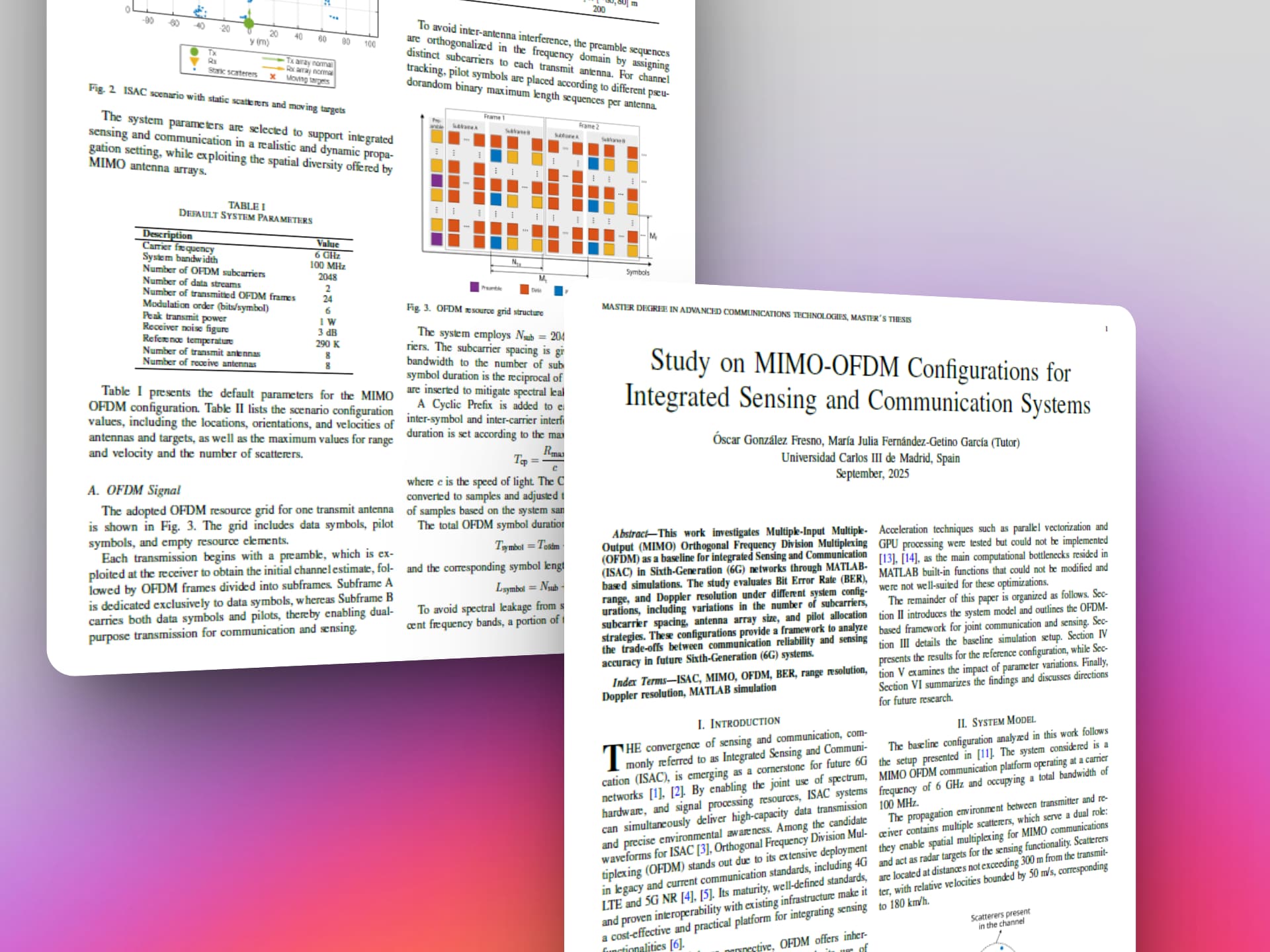Integrated Sensing and Communication System
This Master’s Thesis explores Multiple-Input Multiple-Output Orthogonal Frequency Division Multiplexing (MIMO-OFDM) as a framework for Integrated Sensing and Communication (ISAC) in future Sixth-Generation (6G) wireless systems through MATLAB simulations, analyzing BER, range, and Doppler resolution under multiple configurations.Project Repository Project Report

On this page
Summary
This thesis investigates MIMO-OFDM as a baseline for Integrated Sensing and Communication (ISAC) in 6G networks. The work explores trade-offs between communication reliability and sensing accuracy through detailed MATLAB simulations. The simulations evaluate Bit Error Rate (BER) and range-Doppler response under varying antenna arrays, subcarrier counts and more configurations.
Key Features
- MATLAB-based ISAC framework: Modular simulation code structured into configurable functions for flexible experimentation.
- Dual communication–sensing capability: MIMO-OFDM system designed to transmit data while simultaneously estimating range and velocity of moving targets.
- Baseline configuration: 8×8 MIMO array, 6 GHz carrier frequency, 100 Mhz bandwidth and 2048 subcarriers.
- Performance evaluation: Analyses of BER, range–Doppler maps, and parameter sensitivity (antennas, subcarriers, pilot allocation, modulation order).
- Refactored and documented code: Enhanced readability and maintainability through function modularization and CSV-driven configuration.
Results
-
Communication:
- Baseline 64-QAM BER ≈ 9.96 × 10⁻³.
- Reducing modulation to 4-QAM improves BER to 8.76 × 10⁻⁴.
-
Sensing:
- Accurate detection of moving targets through range–Doppler analysis.
- System detects Doppler shifts corresponding to target motion directions and velocities.
-
Parameter variations:
- Antennas: Increasing the number of antennas is positive por range-Doppler resolution but results in worse BER.
- Subcarriers: More subcarriers increased sensing resolution but degraded BER.
- Data streams: Increasing parallel streams degrades communication reliability but minimally affects sensing.
- Carrier frequency and bandwidth: Higher carrier frequency and bandwidth improve resolution but increase complexity and loss.
- Pilot design: Hexagonal/rectangular pilot grids were tested but limited by MATLAB modulator constraints.
Conclusions
The study concludes that MIMO-OFDM remains a strong candidate waveform for ISAC due to its flexibility and compatibility with current wireless standards.
However, balancing sensing and communication functions requires joint optimization of pilot structure, antenna configuration, and waveform parameters.
Future work includes extending the framework to THz-band scenarios and investigating machine learning–based channel estimation to enhance performance in complex environments.
Acknowledgements
Grateful acknowledgment to María Julia Fernández-Getino García for her supervision and guidance, and to the Master’s Degree in Advanced Communication Technologies at Universidad Carlos III de Madrid for academic support.